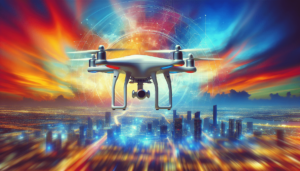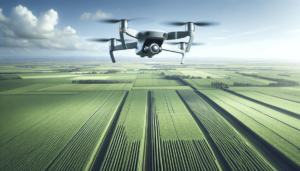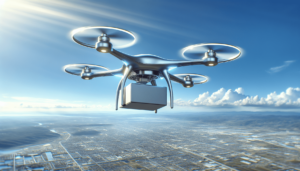Have you ever considered how technology like drones is shaping the way we educate and prepare students for future careers? It’s fascinating to think about the opportunities and challenges that come with integrating drones into the educational landscape. As technology continues to advance at an unprecedented pace, the role of drones in education becomes not only relevant but essential in equipping students with the skills needed for the tech-driven careers of the future.

Understanding Drones in the Educational Context
Drones, or unmanned aerial vehicles (UAVs), offer a unique blend of technology and creativity. In the educational sphere, they represent a bridge between traditional learning paradigms and modern, practical skills application. When you bring drones into the classroom, you’re not just teaching students how to fly these devices; you’re opening doors to lessons in engineering, programming, geography, environmental science, and even ethics.
What Are Drones?
Drones are, essentially, flying robots that can be controlled remotely or fly autonomously using software-controlled flight plans. Equipped with sensors, GPS, and cameras, drones can perform a variety of tasks that make them invaluable for educational purposes. They can be as small as a palm-sized quadcopter or as large as a military-grade aircraft.
Why Drones Matter in Education
The inclusion of drones in education is a testament to how forward-thinking institutions are embracing technology. It’s an acknowledgment that the skills required in tech careers are rapidly changing. Drones provide a dynamic tool for learning, encouraging students to engage deeply with STEM subjects—an acronym that stands for Science, Technology, Engineering, and Mathematics—and beyond.
The Evolution of Drones in Education
Drones have transitioned from being a novelty in the educational toolkit to a full-fledged component of curricula focused on preparing students for future tech careers. Their evolution in education is a story of growing recognition and adoption across various levels of learning.
Early Adoption and Novelty
Initially, the introduction of drones in education was met with excitement but was mostly experimental. Early adopters were often hobby clubs or after-school programs where students could explore these fascinating machines in an informal setting.
Integration into Curricula
Over time, the potential of drones as educational tools was recognized by formal education systems. Schools began integrating drones into their curricula, not just as instruments for STEM learning, but also as tools for wider educational experiences.
Current Trends and Innovations
Today, drones are being used in ways that couldn’t have been imagined a few years ago. From conducting environmental surveys to creating digital art, drones have diversified the ways in which educators can teach and students can learn. Additionally, courses specifically focused on drone technology and its applications have started to emerge, signifying a promising step towards future-focused education.

Skills Development Through Drones
Introducing drones in education does more than excite students; it equips them with a set of skills that are crucial in the modern workforce. Here’s a look at some of the key skill areas that drone education touches upon.
Technical Skills
Operating drones requires understanding of software, mechanics, and electronics. Students who learn to fly drones gain hands-on experience with programming, sensor technologies, and robotic systems. This practical experience is invaluable in tech careers where real-world applications of technological concepts are paramount.
Problem-Solving and Critical Thinking
Drones present opportunities for students to engage in project-based learning, which invariably involves problem-solving. Whether it’s navigating a drone through a challenging course or using drones to collect and analyze data, students are pushed to think critically and innovatively.
Collaborative and Communication Skills
Many drone projects require teamwork, which helps students develop communication and collaboration skills. In a tech career, the ability to work effectively in a team is as crucial as technical expertise. Drone projects often simulate real-world scenarios where teamwork is essential.
Creativity and Innovation
The use of drones in fields such as film making, photography, and art has significantly expanded students’ creative abilities. Engaging with drones allows students to approach challenges creatively and explore innovative solutions, aligning closely with careers in digital design and creative tech sectors.
Real-World Applications of Drones in Education
Understanding drones’ role in education is incomplete without exploring their real-world applications. Drones have multi-disciplinary applications that extend far beyond the traditional classroom environment.
Environmental Monitoring and Conservation
Drones are now regularly used in environmental studies, where they play a pivotal role in monitoring ecosystems, assessing environmental changes, and aiding conservation efforts. Students can engage in authentic assessments and projects by using drones to collect data on wildlife, vegetation, and landscapes.
| Application Area | Example Use Case | Potential Skill Developed |
|---|---|---|
| Environmental Study | Monitoring Wildlife | Data analysis, Ethical thinking |
| Agriculture | Crop Health Monitoring | Data interpretation, Tech design |
| Urban Planning | Geographic Data Collection | Software use, Spatial awareness |
Agriculture and Land Management
In agricultural education, drones are used for crop monitoring and precision agriculture practices. Students learn about land management techniques, pest control, and sustainable farming practices, gaining insights into how technology can enhance agricultural efficiency.
Urban Planning and Architecture
Drones are being leveraged in the fields of urban planning and architecture for mapping and creating 3D models. Students interested in these areas can greatly benefit from understanding how drone technology is applied in planning, design, and construction processes.
Journalism and Media
In journalism schools, drones are utilized to teach students how to capture aerial footage for news stories and documentaries. This new perspective adds depth to reporting and storytelling, providing aspiring journalists with modern tools for their future careers.
Preparing Educators for Integrating Drones
Effective drone education requires educators who are not only familiar with the technology but also adept at integrating it into their teaching. Here’s how educators can prepare to introduce drones into their classrooms.
Training and Professional Development
Educators need access to professional development opportunities that focus on drone technology. Workshops, certification programs, and hands-on training sessions can equip teachers with the knowledge and skills needed to guide students in their drone projects effectively.
Curriculum Design and Lesson Planning
Incorporating drones into the curriculum goes beyond merely flying them. Educators must design lessons that integrate drone technology with learning objectives that span multiple disciplines. This requires a collaborative approach to curriculum design that involves input from technology specialists, subject matter experts, and educators themselves.
Addressing Challenges and Safety Concerns
Safety is a primary concern when working with drones. Educators must be prepared to teach safe drone operation and ensure that all activities comply with legal and institutional regulations.
The Future of Drones in Education
As we look to the future, it’s clear that drones will continue to play a significant role in education. The field is ripe with opportunities for innovative teaching methods and learning experiences that prepare students for tech-centric careers.
Emerging Technologies and Integration
We can expect to see new synergies between drones and other emerging technologies such as artificial intelligence, machine learning, and the Internet of Things (IoT). These integrations will create novel educational experiences and further enhance students’ learning journeys.
Addressing the Digital Divide
While the benefits of drones in education are evident, it’s crucial to address the digital divide that may inhibit some students from accessing these technologies. Ensuring equitable access to resources and support can help level the playing field for all students.
Career Pathways and Opportunities
The growing presence of drones in various industries highlights the potential for new career pathways for students. Offering specialized courses and certifications in drone technology can guide students towards careers in tech, engineering, media, environmental science, and beyond.
Conclusion
The role of drones in education is not simply about embracing new technology for its own sake. It’s about preparing students for a future where technological fluency is just as critical as traditional academic knowledge. As educators, institutions, and policymakers integrate drones into educational settings, they lay the groundwork for preparing a generation ready to tackle the challenges and opportunities of tomorrow’s tech-driven world. The journey of integrating drones into education is ongoing, and its potential is just beginning to unfold.


